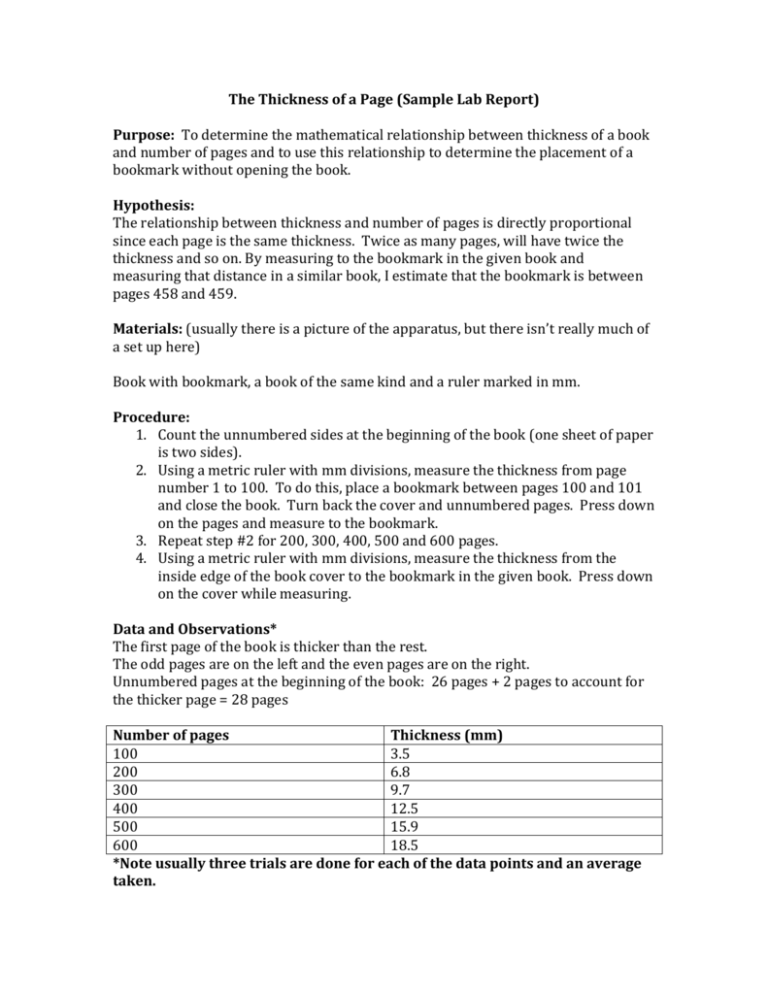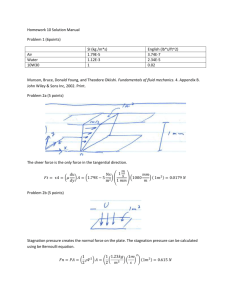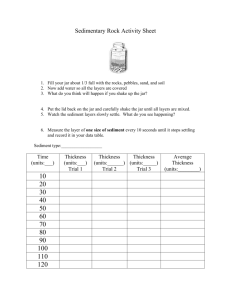Thickness of a Page Lab Report
advertisement

The Thickness of a Page (Sample Lab Report) Purpose: To determine the mathematical relationship between thickness of a book and number of pages and to use this relationship to determine the placement of a bookmark without opening the book. Hypothesis: The relationship between thickness and number of pages is directly proportional since each page is the same thickness. Twice as many pages, will have twice the thickness and so on. By measuring to the bookmark in the given book and measuring that distance in a similar book, I estimate that the bookmark is between pages 458 and 459. Materials: (usually there is a picture of the apparatus, but there isn’t really much of a set up here) Book with bookmark, a book of the same kind and a ruler marked in mm. Procedure: 1. Count the unnumbered sides at the beginning of the book (one sheet of paper is two sides). 2. Using a metric ruler with mm divisions, measure the thickness from page number 1 to 100. To do this, place a bookmark between pages 100 and 101 and close the book. Turn back the cover and unnumbered pages. Press down on the pages and measure to the bookmark. 3. Repeat step #2 for 200, 300, 400, 500 and 600 pages. 4. Using a metric ruler with mm divisions, measure the thickness from the inside edge of the book cover to the bookmark in the given book. Press down on the cover while measuring. Data and Observations* The first page of the book is thicker than the rest. The odd pages are on the left and the even pages are on the right. Unnumbered pages at the beginning of the book: 26 pages + 2 pages to account for the thicker page = 28 pages Number of pages Thickness (mm) 100 3.5 200 6.8 300 9.7 400 12.5 500 15.9 600 18.5 *Note usually three trials are done for each of the data points and an average taken. Data Analysis: Mathematical model: T = (0.0300 mm/page) P 5% rule for the y-­‐intercept: The y-­‐intercept of 0.640mm is less than 5% of the highest y-­‐value since 5% of 18.5 mm is 0.925mm so the y-­‐intercept can be called zero. Substituting 16.0mm into the equation above: 16.0mm = (0.0300 mm/page) P P = (16.0mm)/(0.0300mm/page) = 533 pages position of the book mark = 533 pages – 28 unnumbered pages = 505 pages so the book mark is between pages 504 and 505. Conclusion: Thickness is directly proportional to the number of pages as shown by the line on the graph with the mathematical model, T = (0.0300 mm/page) P. This agrees with my hypothesis. The slope gives the thickness of one page and the y-­‐intercept of zero means that zero pages have zero thickness. Interpolating from the graph as shown above in the data analysis section, the bookmark is between pages 504 and 505. This is a percent difference of 9.1% from the hypothesis of between pages 458 and 459. Small thicknesses are difficult to measure with a ruler and this accounts for most of the experimental error. Even a measuring error of ±0.5mm results in a ±16 page error. Hopefully using the slope or average thickness of a page helps to minimize this error. With a ruler you can only estimate tenths of a millimeter. Not compressing the pages could also result in a thickness that was too high. If I were to redo this lab, I would measure thicknesses with a vernier caliper that could compress the pages and also measure more precisely.







